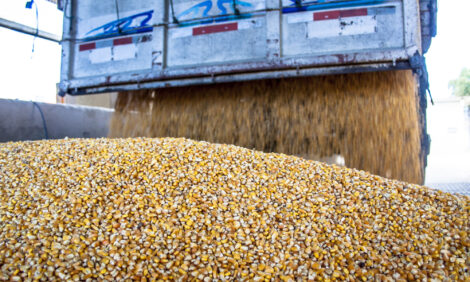



Feed Costs Put The Squeeze On Dairy Margins
US - With high forage costs and grain prices threatening profit margins for dairy producers, a Purdue Extension agricultural economist says it's important to keep an eye on the bottom line.The preliminary US all-milk price for October 2011 was estimated at $19.90 per hundredweight, which is a decrease from September but up about $1.40 from October of 2010. Despite the strong prices, soaring feed costs still threaten dairy producers' profits.
"The US Department of Agriculture's milk-to-feed price ratio for October 2011 was estimated at 1.79, down from a revised 1.84 in September 2011," Nicole Olynk said. "Despite higher milk prices in 2011, rising feed costs have caused the decline in the milk-to-feed price ratio from 2.40 in October of last year."
Part of the challenge for dairies has been corn and soybean prices. But October soybean and corn prices were down from September, averaging $5.92 per bushel for corn and $11.90 per bushel for soybeans.
Another major factor in dairy feed ration costs has been rapidly rising prices of hay and other forages, Ms Olynk said. In August baled hay prices averaged $191 per ton, up from $189 in July and a major increase from the $118 per ton prices in August 2010. Prices have continued to rise into the fall and averaged $203 per ton for alfalfa in October.
"Dairy farms better able to control their own feed production - specifically forage production - may be best positioned to survive the feed prices," she said.
While cheese prices have been volatile in 2011, butter and other dairy products have helped producers maintain profit margins. Butter prices were extremely strong through the summer but recently have softened slightly. Other components, such as dry whey and nonfat dry milk, have seen significant price increases this year. Nonfat dry milk prices are up 25 per cent, while whey prices have risen by 65 per cent.
In the coming year, Ms Olynk said there are reasons for producers to be both optimistic and cautious. Milk production is expected to increase by about 1.4 per cent per cow, which means a higher milk supply, but it also can mean lower prices.
Another area dairy producers should keep an eye on is farm policy. There have been several proposals for dairy pricing reform in Congress, which Ms Olynk said have generated much discussion about supply management, margin protection and federal order reform.
"Dairy will be an important topic in the US Congress during the Farm Bill debate, or sooner," Ms Olynk said. "Significant changes to dairy policies are possible, if not likely."


